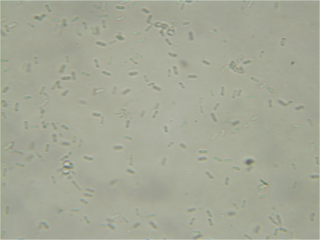Phoma
| Phoma | |
|---|---|

| |
| Phoma exigua spores | |
| Scientific classification | |
| Kingdom: | |
| Phylum: | |
| Class: | |
| Subclass: | |
| Order: | |
| Family: | |
| Genus: | Phoma
|
| Binomial name | |
| Phoma (Saccardo, 1880)[1]
| |
Phoma is a genus of common coelomycetous soil fungi. It contains many plant pathogenic species. About 200 Phoma taxa have been defined and recognized which may be divided into two large groups: (i) plurivorous fungi, generally saprobic or weakly parasitic, mainly from temperate regions in Eurasia, but occasionally also found in other parts of the world (including areas with cool or warm climates); and (ii) specific pathogens of cultivated plants.[2]
Spores are colorless and unicellular. The pycnidia are black and depressed in the tissues of the host. Phoma is arbitrarily limited to those species in which the spores are less than 15ų as the larger spored forms have been placed in the genus Macrophoma. The most important species include Phoma beta which is the cause of the heart rot and blight of beets, Phoma batata that produces a dry rot of sweet potato, and Phoma solani. [3]
Species of Phoma
- Phoma exigua
- Phoma glomerata
External links
References
- ^ "Integrated Taxonomic Information System" (web). www.itis.gov. Retrieved 2008-01-12.
- ^ Van der Aa HA, Noordeloos ME, de Gruyter J. (1990). Species concepts in some larger genera of the Coelomycetes. Studies in Mycology 32: 3-19.
- ^ Harshberger, John William (1917). A Text-book of Mycology and Plant Pathology. Original from the University of Michigan: P. Blakiston's son & co. pp. page 261-262. January 12, 2008.
{{cite book}}:|pages=has extra text (help)
- Boerema, G. H.; de Gruyter, J.; Noordeloos, M. E.; Hamers, M. E. C. 2004. Phoma Identification Manual: Differentiation of Specific and Infra-specific Taxa in Culture. CABI.
